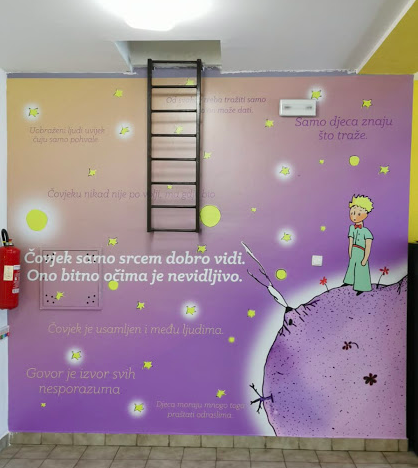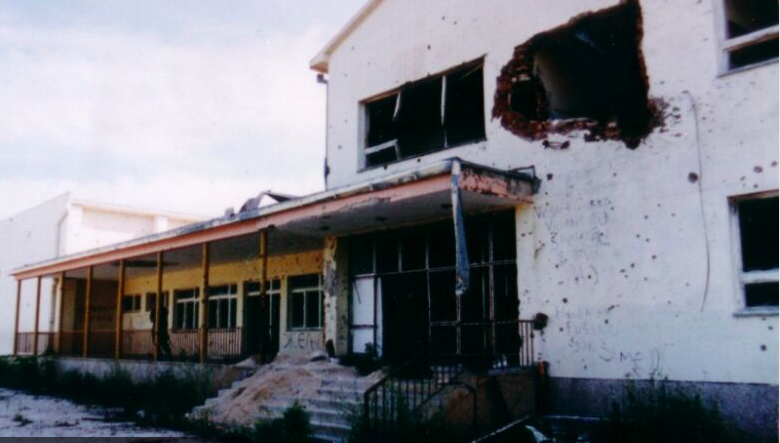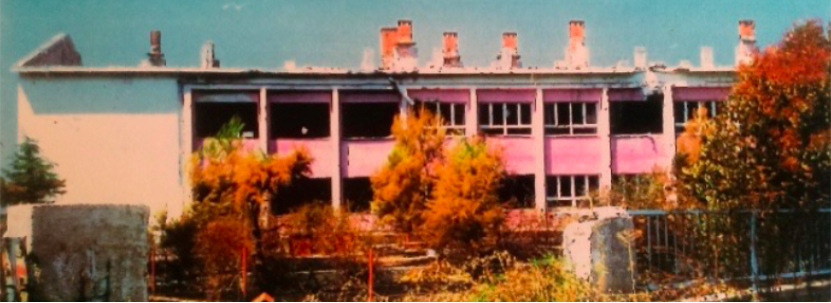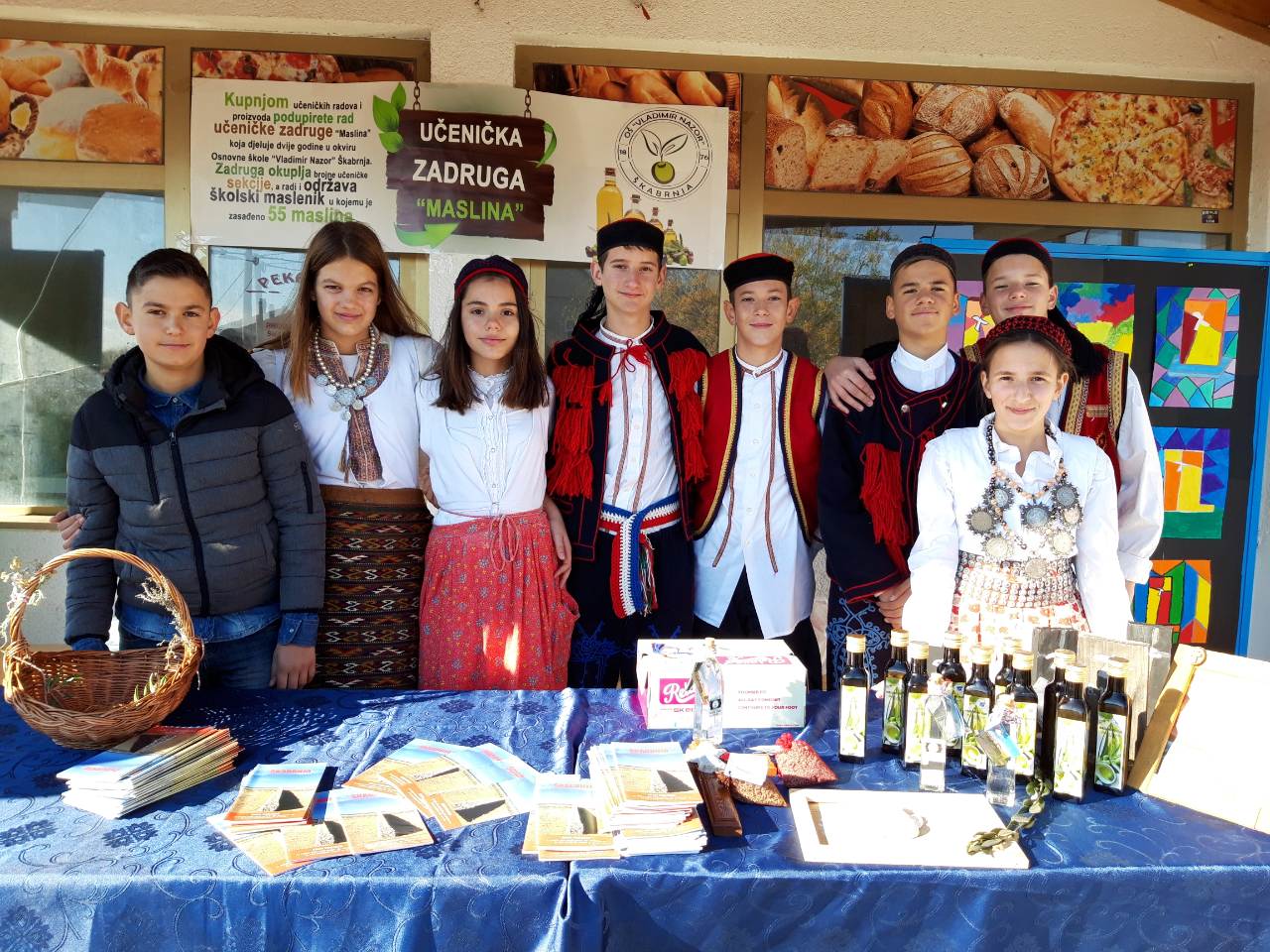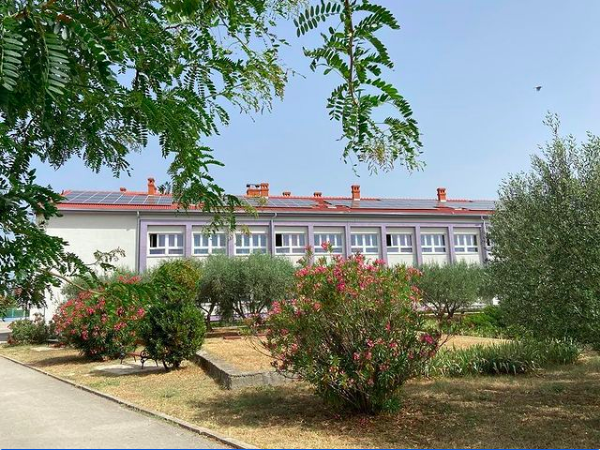The Blue Economy Happy School Skabrnja
Basic information
Project Title
Full project title
Category
Project Description
The north Dalmatian village of Škabrnja, with less than 2,000 inhabitants located in the Zadar County of Mediterranean south Croatia, was left with a legacy of complete and utter destruction. It goes down in history as one of the darkest places in the five-year conflict during the Balkan wars.
The core of destruction in the village was the Vladimir Nazor School with the massive graveyard of villagers.
Students and teachers transformed the stigma of war into a most modern school in Croatia.
Geographical Scope
Project Region
Urban or rural issues
Physical or other transformations
EU Programme or fund
Which funds
Description of the project
Summary
Following the devastating Balkan Wars that started in Croatia in 1991 and then spilled over into Bosnia-Herzegovina a year later, the north Dalmatian village of Škabrnja, with less than 2,000 inhabitants located in the Zadar County of Mediterranean south Croatia, was left with a legacy of complete and utter destruction. It goes down in history as one of the darkest places in the five-year conflict.
The core of destruction in the village was the Vladimir Nazor School, where tragically, a year after the war, a mass grave was discovered in the school's grounds, along with a message painted on its walls saying: ‘Welcome to the Village of the Death’. Such horrors engendered great emotional trauma not only in the village but also in the nation's collective psyche.
This impoverished and desolate village clung on with all the marks of war visible for any visitor to see. Memories of what happened, combined with high unemployment and landmines scattered everywhere, taking decades to clean up, set the stage for a grim future.
The application to Zayed Sustainability Prize in 2017 marked the start of a transformational and exciting journey that initiated the students’ determination to embrace a 2,000-year-old tradition from the region. These 13- to 15-year old teenagers founded ‘Olive’ a student-run organic olive garden cooperative. This area is renowned for growing excellent olives since Roman Empire and the students’ plan is committed to strengthening this agricultural, cultural and business activity.
On 15th of January 2018 school won the 1st place of the Zayed Sustainability Prize for the High school category-Europe in Abu Dhabi. The sam day school applied for the Operational Programme Competitiveness and Cohesion 2014 - 2020 of EU, specific goal 4c1o to start the full renovation of the school. It coalesced with the international recognition Day of Croatia as a sovereign country.
Next three years school was transformed into most modern school in Croatia.
Key objectives for sustainability
The project is inspired by The Blue Economy concept of sustainable development. It is the first zero-emission concept presented globally before the Kyoto protocol 1997 by prof. Gunter Pauli in 1989. The core of this concept is to observe first what is locally available and how to design an open system that can grow and adjust to new ideas and projects inspired by the logic of the local ecosystem and wisdom of Nature while not producing waste and emissions.
Skabrnja is located in a Mediterranean climate with 2550 sunny hours a year. It is a region that was known for high-quality olive oil during the Roman Empire as Liburnia. Liburnian olive oil was mentioned in the first cookbook in 1 A.D. by Gavius Apicius. Therefore the project consists of 30 kW solar connected with Light Fidelity internet in school, transmitting internet via light waves powered by the Sun. All classrooms implemented LED lights powered by the Sun via solar on the roof. Cooperative ''Olive'' was founded by students to nourish 60 organic olive trees in the garden and nourish the millennial olive oil tradition of the region. A newly established school's kitchen and Cooperative ''Olive'' need transportation and for that purpose an EV car was purchased and is powered by the Sun also from the solar on the roof. Students created solar backpacks to wear Sun on their backs.
''The Blue Economy Happy school'' won the Zayed Sustainability Prize in Abu Dhabi in January 2018 as the best student project from Europe. The Zayed Sustainability Prize, an evolution of the Zayed Future Energy Prize, is the UAE’s pioneering global award in sustainability and a tribute to the legacy of the late founding father of the UAE, Sheikh Zayed bin Sultan Al Nahyan. Established in 2008, this annual award recognizes and rewards the achievements of those who are driving impactful, innovative and inspiring sustainability solutions across five distinct categories: Health, Food, Energy, Water and Global High Schools.
Key objectives for aesthetics and quality
After the war, Vladimir Nazor elementary school was completely destroyed and burned with landmines scattered around and a massive graveyard of villagers was found in the vicinity of the school. The trees and garden were burned to the ground and the message on the school's walls ''Welcome to the dead village'' provides a platform for some apocalyptic movie scenery. The pictures of the school are available in this document. Every family in the village lost one or more members of the family.
As a young boy the principal of the school attended this school and during the massacre in the village, he managed to escape with his family through the only available passage in the village towards Zadar. As a young boy, the school for him and his classmates was the center of the world. To hear laughter and play with other kids from the village was part of everyday life. Our principal decided to dedicate his life to providing the next generations a school of hope, laughter, light, inspiration and Future.
The school today is the most modern school in Croatia thanks to EU funding for energy-efficient school and Zayed Sustainability Prize for implementing new technologies. But beyond this functionality, we painted our school with messages to new generations - The Little Prince, colors of Nature, flowers, and artistic expressions of our students. Once there were landmines we have 60 organic olive trees with the beautiful garden of Mediterranean herbs around the school.
We also chose the purple color of our school inspired by the lavender plant that grows in the school's garden. Combined with white color it is the most beautiful building in the village. We decided to enlighten the school during the night and the villagers loved the idea. Something that was dark and painful is turned into a light for everyone to see. But most of all our students are enjoying being in a school that is beautiful outside and inside. They are inspired to do more and to express themselves.
Key objectives for inclusion
The history of the Bauhaus Movement was initiated by the Bauhaus school that arose out of the ashes of post-war Germany in 1919 with the conviction that a beautifully-designed world is the prerogative of everybody.
Skabrnja is one of the poorest municipalities in Croatia. It is a population of only 2000 villagers. It slowly rises from the ashes of post-war Croatia and it took decades to clean landmines in and around the village. This project puts this municipality on the map of inclusion into Croatian society. Before this project, Skabrnja was under the highlight every year on the 18th of November remembering the victims of war. And all year around this village clung on the periphery of the society. Not a bright future or inspiration for our students. But remarkably Skabrnja has one of the best birth rate in Croatia and the elementary school is packed with children.
This municipality is part of Ravni Kotari a fertile region for agriculture with rich millennial history of superb olive oil dating back to the Roman Empire. Before war this region was known for olive trees and Maraska trees, a special sort of sour cherry. One of the pillars of our project is nurturing the millennial tradition and inspiring future generations to stay in their village and to work in sustainable agriculture. It is great news that our new young municipality council chairman returned from Germany to help our village. We hope that many young families with their children will come back to Skabrnja to create a more beautiful future for all of us.
Results in relation to category
Our project ''The Blue Economy Happy school'' Skabrnja applied for the category - Prioritising the places and people that need it the most. As stated before, Skabrnja is a symbol of darkness, pain and huge emotional trauma in the national Croatian psyche. It is one of the poorest municipalities in Croatia known for scattered landmines and no future at all. The massacre was intentionally done in the school, the symbol of life and new generations. ''Welcome to Death village'' engraved the dark future for generations to come.
Due to a sustainable project powered by students and teachers, the Vladimir Nazor school won Zayed Sustainability Prize in Abu Dhabi for the best project in Europe in 2018. It gave a lot of media attention to this village in national media and it was quite a shocking experience that something so big is coming from this desolate village. The stigma of war was suddenly transformed into a huge accomplishment driven by the young generation that grew up in such a negative environment of constant remembering of the victims and the war.
But the students and teachers chose a different path. And this path leads them to the Vatican and Pope Francis. The Blue Economy Happy school Skabrnja is chosen as one of the 25 projects worldwide to be part of the Satish Kumar book Regenerative Learning - Education as if people and planet matter. The foreword for this book is written by Pope Francis.
How Citizens benefit
Our school managed to raise 670.000 EUR for The Blue Economy Happy school Skabrnja in Abu Dhabi combined with Operational Programme Competitiveness and Cohesion 2014 - 2020 of EU, specific goal 4c1., that complemented each other. The school has gone through a huge transformation in three years time period and it opened a space for local entrepreneurs to work on both complementary projects. They were involved in changing the asbestos roof on the school with the new one and installing the solar panels on a new roof. As part of the EU project, they were involved in removing the old windows and replacing them with a new ones. Installing the LED light in classrooms and changing the floors in classrooms.
Students cooperative ''Olive'' is inspired by the local entrepreneur ''Dolina Maslina'' (The valley of the olives) that is the biggest organic olive oil farm in Croatia. This organic olive farm with thousands of olive trees is built in the vicinity of Skabrnja village where there was a battlefield during the Homeland War. The territory was left with landmines and it took decades to clean this valuable agricultural piece of land. Today this entrepreneur is inspiring young students to honor the tradition of the region and millennial history but also to build something new and be successful. Students sell their olive oil to the local famous restaurant on the Adriatic coast.
NGO for Sustainable Development of Croatia UZOR Hrvatska is one of the first civil societies in Croatia regarding the circular economy. They joined the project from the start. UZOR Hrvatska won the Sozial Marie prize in Vienna Austria for their project in the community regarding waste and circular economy. They were part of education in our school where students participated in bringing the solution for zero waste school and how to identify and recycle waste. the school established creative workshops where students make new products out the waste and sell it through Student's Coo
Physical or other transformations
Innovative character
The school in Skabrnja is the first in Croatia and one of the first in Europe to implement Li-Fi Light fidelity internet through LED lights. Li-Fi is part of the broader systemic design with 30kW solar power panels powered by the SUN giving electricity to LED lights in all the classrooms. But also giving the opportunity to exchange information through the visible light spectrum which is much faster and more secure internet. The implementation of this technology was powered by CARNET agency Croatian Academic Research Network Research as part of EU project e-schools and Zayed Sustainability Prize award.. While implementing modern EU wi fi 6 protocol in Skabrnja school CARNET decided to have a pilot project with Li-Fi technology.
E school project in Croatia won the REGIO stars award but still, more than 800 schools in underdeveloped parts of Croatia were not part of it so CARNET is looking for solutions. Solutions from school in Skabrnja provide a playing ground for CARNET to optimize and find the best way to digitalize the rest of the 800 schools in Croatia.
Light Fidelity technology in school provides for teachers to ensure uninterrupted video calls or high-bandwidth demonstrations. LiFi can be used in classrooms for simultaneous high-quality video streaming by hundreds of students. By offloading the high-bandwidth users to LiFi, more airtime becomes available for the WiFi system.
Learning transferred to other parties
As explained in the previous chapter, school in Skabrnja implemented systemic design that could be easily transferred to other schools in Croatia and broader. This systemic design is powered by the abundance of Sun, 30 kW solar panels that gives electricity to LED lights, Li-Fi light fidelity internet, and electric car that serves school for the student's Cooperative ''Olive'' and school's kitchen. Students also create solar backpacks to wear the Sun on their back while walking to school and create workshops how to reuse the waste in the school. The transfer of the design is suitable for more Mediterranean countries with lots of sunny days. Clustering entrepreneurship with sustainable technologies and art expression inspire future generation to live sustainably with the environment.
CARNET is looking for solutions to digitalize 800 schools in Croatia that are not covered with EU project e-Schools. The project in Skabrnja is a playing ground for them to optimize the system for other schools based on the number of students and connectivity.
This systemic design of The Blue Economy Happy School is easily transferable to small rural communities. In 2021 Skabrnja village elected a new young electoral who came back from Germany to help his village. He was impressed with the project and decided to deploy 200 HA of land for the agricultural cooperative of the village and the solar power station in the vicinity of the village. They formed the new bureau for EU funds to find solutions on how to transfer this design into a bigger scale for the village based on the zero concepts. This news went national and it was a nice surprise that they decided to move on.
The principle of how to design systemic design based on The Blue Economy could be found in a book The Blue Economy or to visit Blue Campus web site for students worldwide.

